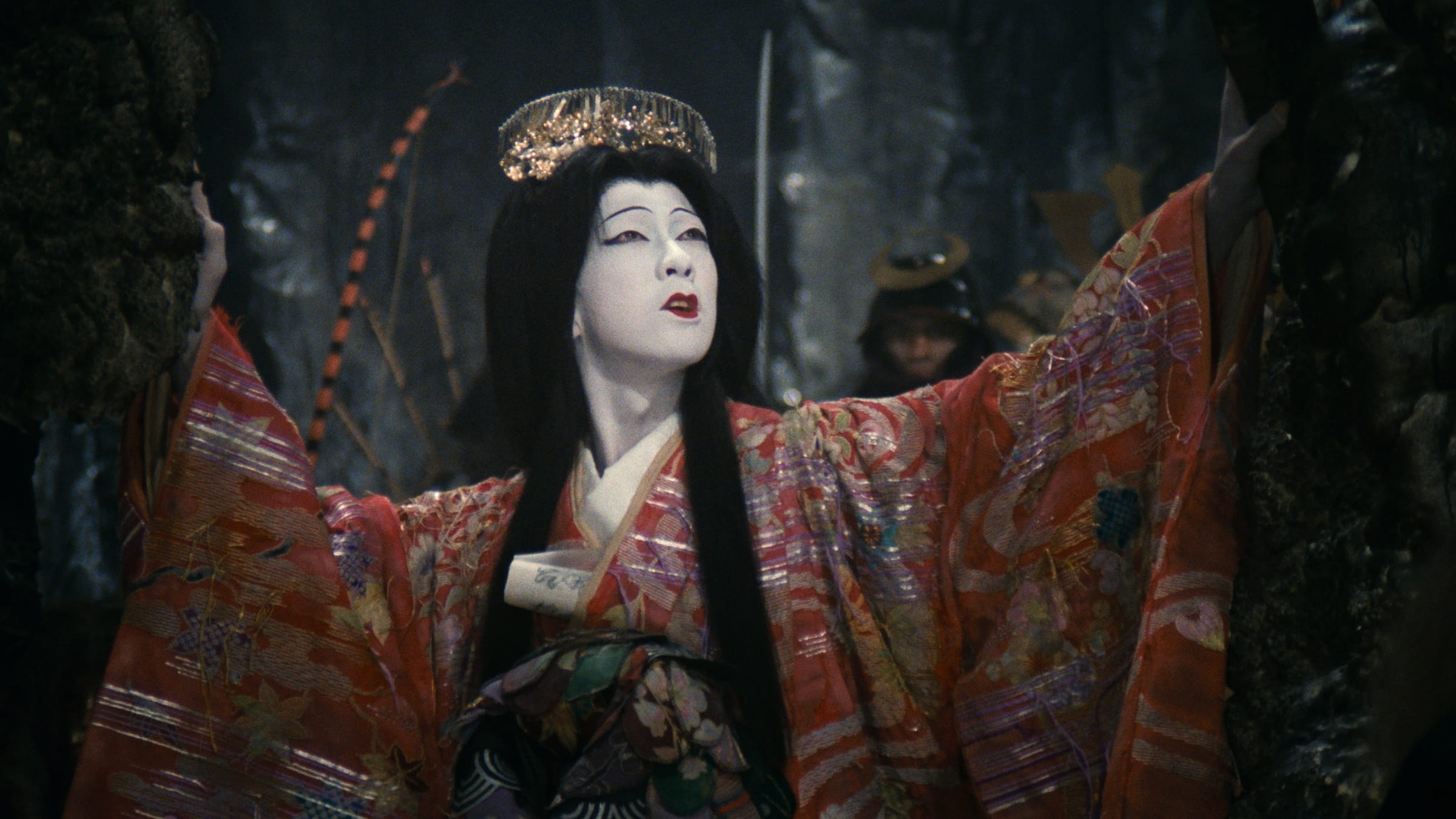RELATED ARTICLE
Pale Flower: Loser Take All
The Criterion Collection

It’s difficult to not be, by default, an amateur Nipponophile nowadays, especially if you belong to the roughly 50 percent of the world’s population born since 1995, nostrils-deep in the ever-crashing tsunami of Japanese pop culture—animated, comic-booked, video-gamed, and otherwise. But confronting the twisty cultural DNA of Masahiro Shinoda’s Demon Pond (1979) is still a shock to any Western viewer’s system—a jolt of delicious weirdness that may have seemed as throwback-wacky when it was released in its home country as it has felt outrageous everywhere else. Maybe more than any other film, Shinoda’s mythopoeic bugout builds a bridge between what the West perceives as “realism” and hellzapoppin’ Kabuki dream-time, the way a rainbow might connect a mundane nursery life to a neverland oasis.
In fact, the movie’s segue into extreme Nippo-palooza is a hard right, midway through the film, as if Shinoda had gone out of his way to tenderize us like a steak before turning up the flame. That radical departure comes when Shinoda ushers us into the realm of Kabuki, a theatrical form that was already over four hundred years old when the film was made. But while Demon Pond has the machinery of a fantastic legend, it is adapted from a semi-modernist Kabuki play written by Kyoka Izumi in 1913—so one can imagine that, in Japan, the movie was seen by its first audiences not as a revisited antiquity but as an early-century classic being updated. That Kabuki films are and were rare provided Shinoda with an opportunity to plumb a die-hard cache of underexploited cultural wealth while hauling it into the postwar era and making it feel new. The old art form may have also had a personal resonance for the director: the studio Shochiku, which was instrumental in launching his career in the 1960s, began in the late nineteenth century as a Kabuki theater company, making Demon Pond something of an alum’s homage to the venerable outfit. But, being a thoroughly twentieth-century thing, the movie fulfills its Kabuki-ness with both an unabashed salute to the ancient genre and a self-conscious pomo wink.
For those of us who may not qualify as card-carrying Japanologists, Demon Pond can be a bracingly destabilizing experience. For Shinoda, a key figure in the Japanese New Wave alongside Nagisa Oshima and Shohei Imamura, it was a genre morph in a career already full of them. And like Double Suicide (1969), which daringly shifts between live action and Bunraku puppet theater, and Himiko (1974), a wild engagement with butoh dance, Demon Pond is another instance of Shinoda repurposing classical theater.
Though it takes a good deal of its full-frontal stylistic license from the spirit of the New Wave, the film is in significant ways very faithful to its Kabuki heritage, down to the matter-of-fact cinematic translations of the illusionary keren stagecraft, and, by way of Izumi, the slow-starting five-act structure of a classical Kabuki play. Certainly, the film is un-nouveau-ishly opulent—it was one of the most expensive and elaborate films made in Japan up to that point—beginning in sumptuous, saturated wilderness vistas (some reportedly shot in Hawaii) that quickly give way for its protagonist, trekking teacher-botanist Gakuen (Tsutomu Yamazaki), to drought-decimated wastes and a decaying mountain village benumbed in a funeral march. The water crisis is such that when Gakuen stumbles into town needing to rinse his eye, an innkeeper offers to moisten it with breast milk, opening her shirt. Soon, as the natural mountainscapes are spookily invaded by twilit theatrical sets and miniatures, we learn that there’s a babbling stream nearby. A spectral woman whom Gakuen meets—Yuri (famed Kabuki onnagata Tamasaburo Bando)—tells him the stream is haunted, and that its nearby source, the Demon Pond, is home to a dragon princess.

